
The best way to experience the fantastic Finnish archipelago is to drive or cycle the Archipelago Trail (also known as Archipelago Ring Road) from Turku to Naantali. The 250 kilometers long ring road takes you from one island to another over bridges and (free) ferry crossings.
In addition to the beautiful seaside scenery and a gorgeous wooden town, there are some unique attractions on the route, such as a former island of the lepers and an ancient stone labyrinth. If you are lucky, you might even meet the man who claims he is possessed by the spirit of Salvador Dali himself.
If you are traveling by car, you can drive the whole route in just one day, but that leaves you with little time for sightseeing. It’s better to take your time and enjoy the archipelago at a leisurely pace, staying two nights along the route. Add one more night and you can make a side trip to Utö, one of the most remote islands in Finland.
This article first outlines the most important practical information for navigating the Archipelago Trail and then introduces the islands and attractions along the route.
A note to the place names. The Finnish archipelago is in its most parts bilingual, and the islands have two names, Finnish and Swedish. Here we are using mainly the Swedish names as they tend to be easier for the English speakers. The Finnish names are in parenthesis. Most Swedish names end with the letter “ö” which means island.
What is the best time to drive the Archipelago Trail?
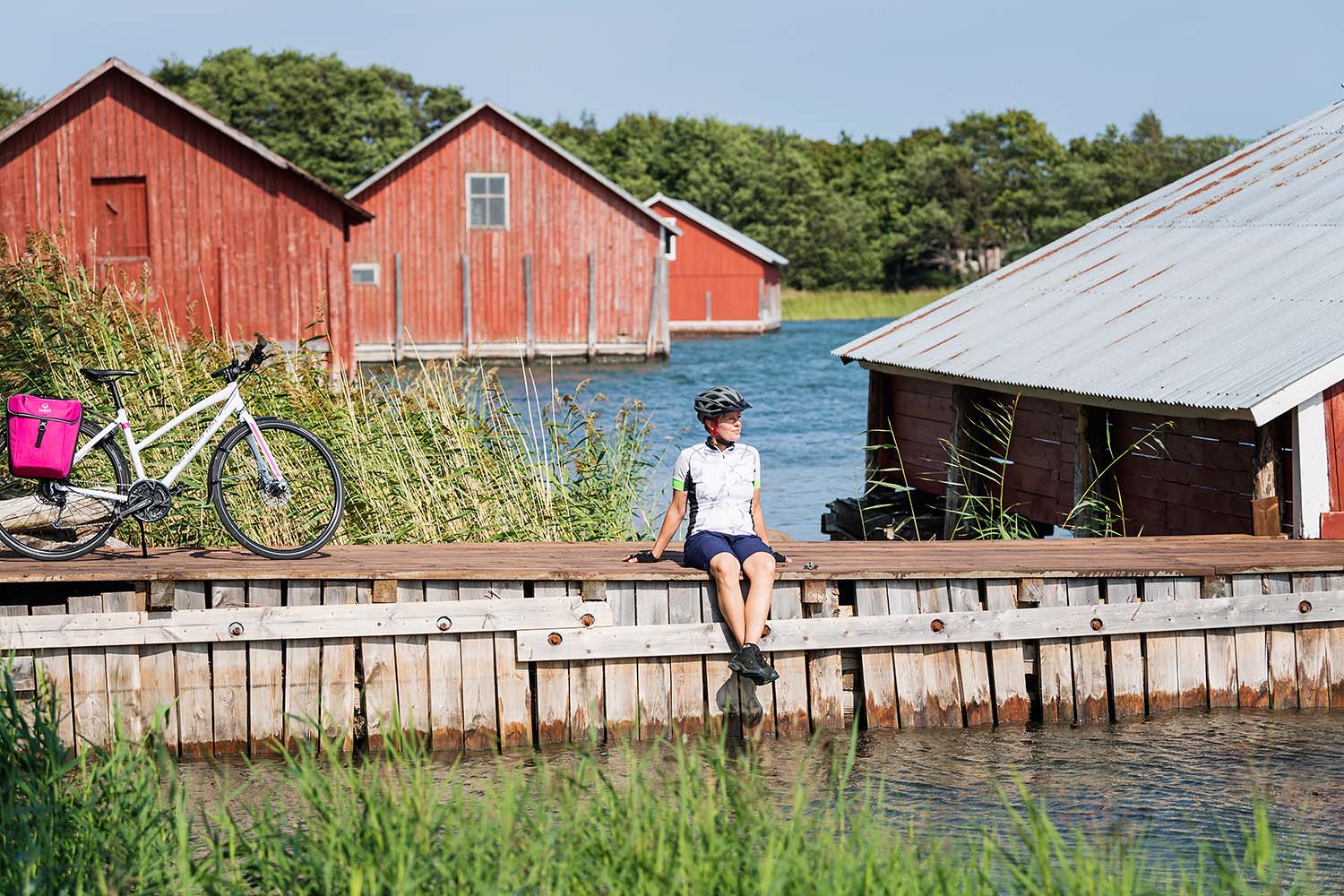
Summer months are the best and only time you can drive the Archipelago Trail in its entirety. All the ferries along the route are in daily service only from the beginning of May until the end of August. In September they run only for the first three weekends.
A good part of the route can also be explored in winter, though. The ferries from Parainen to Nagu and from Nagu to Korppoo operate in short intervals even in the winter so you can easily explore at least part of the route even in the winter. Even the faraway Utö Island is connected to Nagu around the year. Just prepare for some seriously chilly weather if you choose to travel to the archipelago in the winter!
Where does the Archipelago Ring Road begin and where does it end?
The archipelago ring road begins in Turku on the mainland and ends at Naantali, just a stone’s throw from Turku. Both cities are very idyllic, and you should budget at least one extra day to explore each of them.
In which direction should you drive the Archipelago Ring Road?
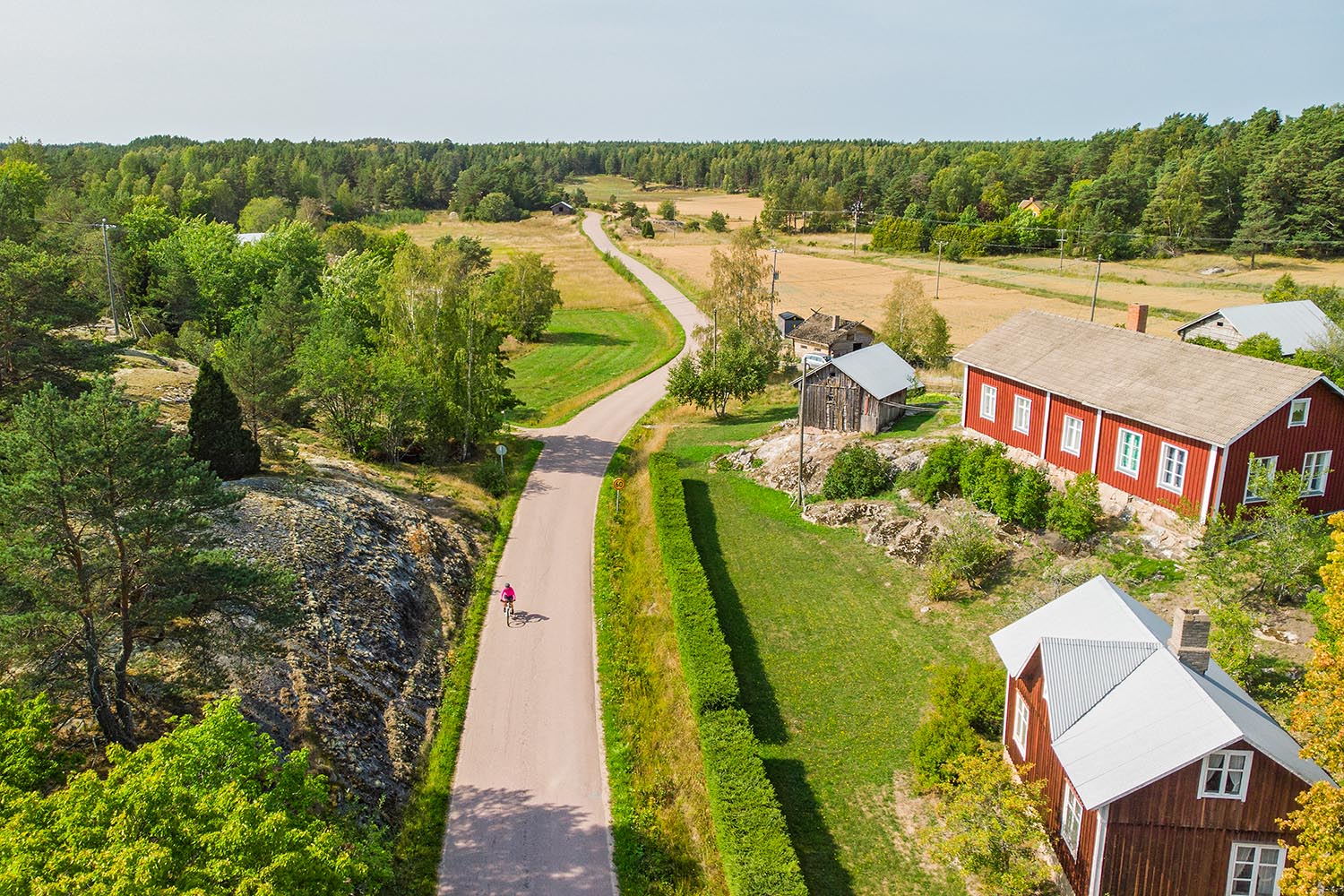
By far the most popular way to drive the route is clockwise – the same way it is described in this article. However, during the busiest weeks of the summer, you might opt to start from Naantali and drive the route counterclockwise, thus avoiding queuing for ferries along the route.
Check the ferry timetables in advance
Shorter ferry rides operate regularly, every 15 to 30 minutes or so. Longer ones towards the end of the trail such as Iniö-Kustavi are less frequent, and it is a good idea to check their schedules in advance so you don’t end up missing the last ferry of the day.
You will find the timetables on Finnferries website, and they have a practical app, too.
Should you book accommodation in advance?
If you are traveling during the busiest holiday season for Finns – from late June to the beginning of August – it is worth booking the accommodation in advance, as there are a limited number of places to stay along the route.
And now, let’s begin to explore the Archipelago Trail!
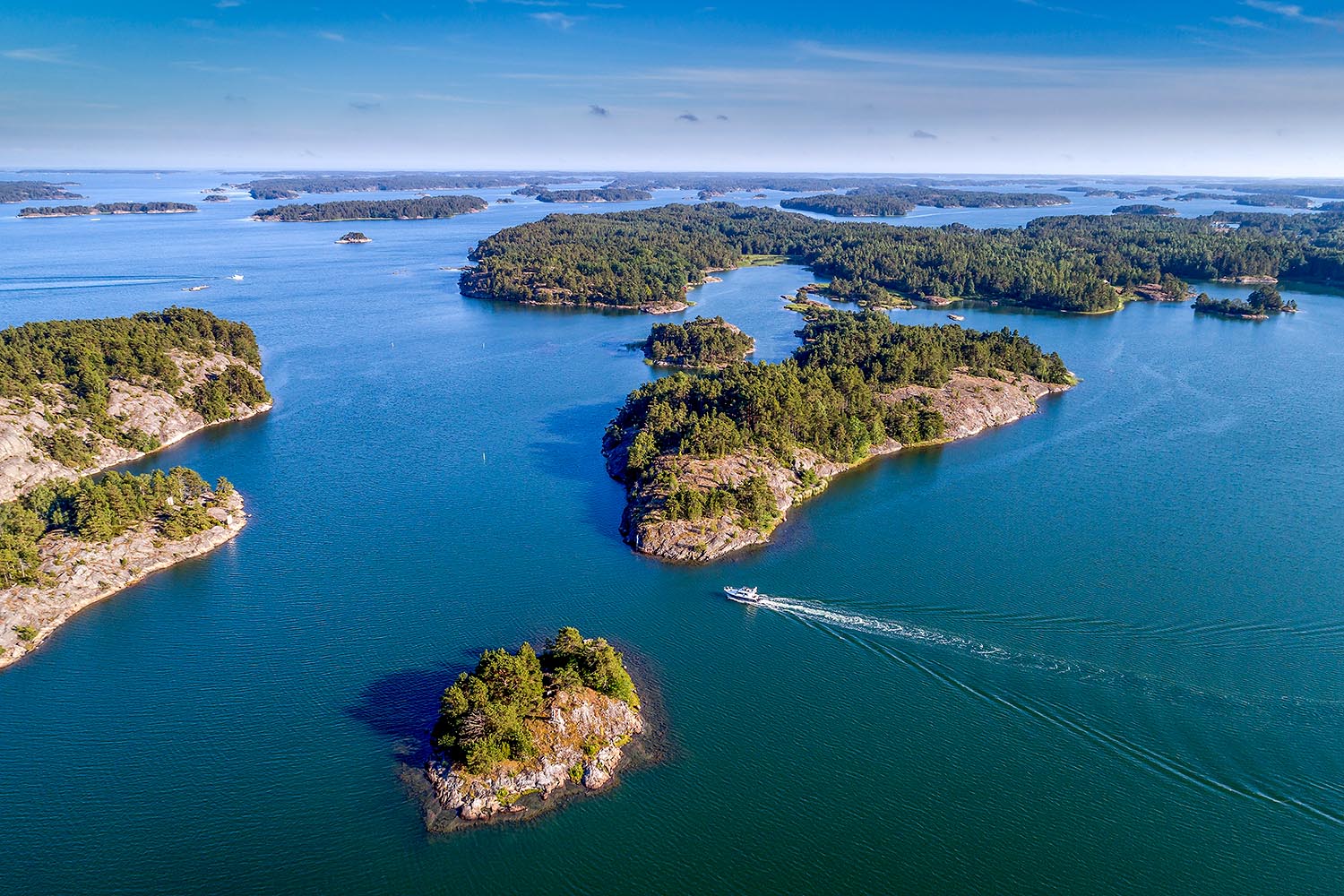
Archipelago Trail starts in Turku
The ring road starts in Turku (Åbo in Swedish), which served as the capital of Finland in the Middle Ages. At those times Finland was under Swedish rule, and Turku was the second largest city in the kingdom. As a reminder of its glorious history, there is a grand castle and a cathedral to visit. In addition to history, Turku has plenty of lively restaurants and bars, yet the center is small enough to be conveniently walked around.
Explore the ruins of Kuusisto Episcopal Castle
Soon after Turku you cross a small bridge and arrive at Kustö (Kuusisto). This otherwise unremarkable island has one curious sight, the ruins of the Episcopal Castle of Kuusisto. The ruins are so small and modest that even many Finns don’t know about them, so this is definitely not a must-see attraction. But on the other hand, there’s a certain kind of secretiveness in these ruins that make them interesting. How often can you stand on a medieval castle just by yourself?
During the middle-ages the castle belonged to the Catholic bishop of Finland. When King Gustav Vasa of Sweden converted his country to Protestantism, he ordered the castle to be destroyed in 1528 so that it would not leave a foothold for Catholics in Finland.
Finland’s last Catholic bishop, Arvid Kurki, had already left the castle six years earlier, fleeing attacking Danes. His escape to Sweden came to a tragic end when the ship carrying the bishop sank.
Pargas – searching for the soul of Salvador Dali
From Kustö your next stop is Pargas (Parainen), which is often called the capital of The Archipelago Sea. Right in the middle of the small city centre is a short pedestrian street. Here you will find the ArtBank Gallery, the only permanent exhibition of Salvador Dali’s art in the Nordic countries. But what makes the gallery especially notable is its entertaining owner, Ted Wallin, who claims Dali’s soul passed to him after the artist died. You will find the building easily, just look for a giant ant sculpture by Finnish designer Stefan Lindfors above the entrance.
Also worth having a look is the church of Pargas, which is a very typical example of the small stone churches built all over Southern Finland during the Middle Ages.
Next to the church is the idyllic old town of Pargas called Gamla Malm, whose narrow alleys are lined with colorful wooden houses and their pretty gardens. The houses are mostly from the 19th century, but among them are also buildings from the late 18th century. In the old days, artisans and sailors used to live in these houses, and in a few huts there were even illegal taverns catering for the churchgoing folks on Sundays.
By the way, this is one of the least known wooden towns in Finland, so it’s pretty much devoid of other tourists. At least for now. So you can congratulate yourself if you find your way here!
An impressive attraction is also Pargas’ lime quarry, which can be admired from behind a guardrail. The mine, which began operating in 1989 just next to the town centre, is the largest open pit in the Nordic countries and reaches a staggering 150 meters depth.
Sattmark Café – the most famous coffeehouse along the Archipelago Trail
Some 10 kilometers south of Pargas you will find Sattmark Café, probably the most famous coffeehouse along the Archipelago Trail. It is located in an idyllic 1750s croft cottage. Enjoy their delicious Princess cake or smoked fish if you are more hungry. The cafe also rents small and cozy eco-cottages.
After Sattmark you will arrive at the first ferry crossing. Now we are finally reaching the “real” archipelago!
Nagu – the Riviera of Finnish Archipelago
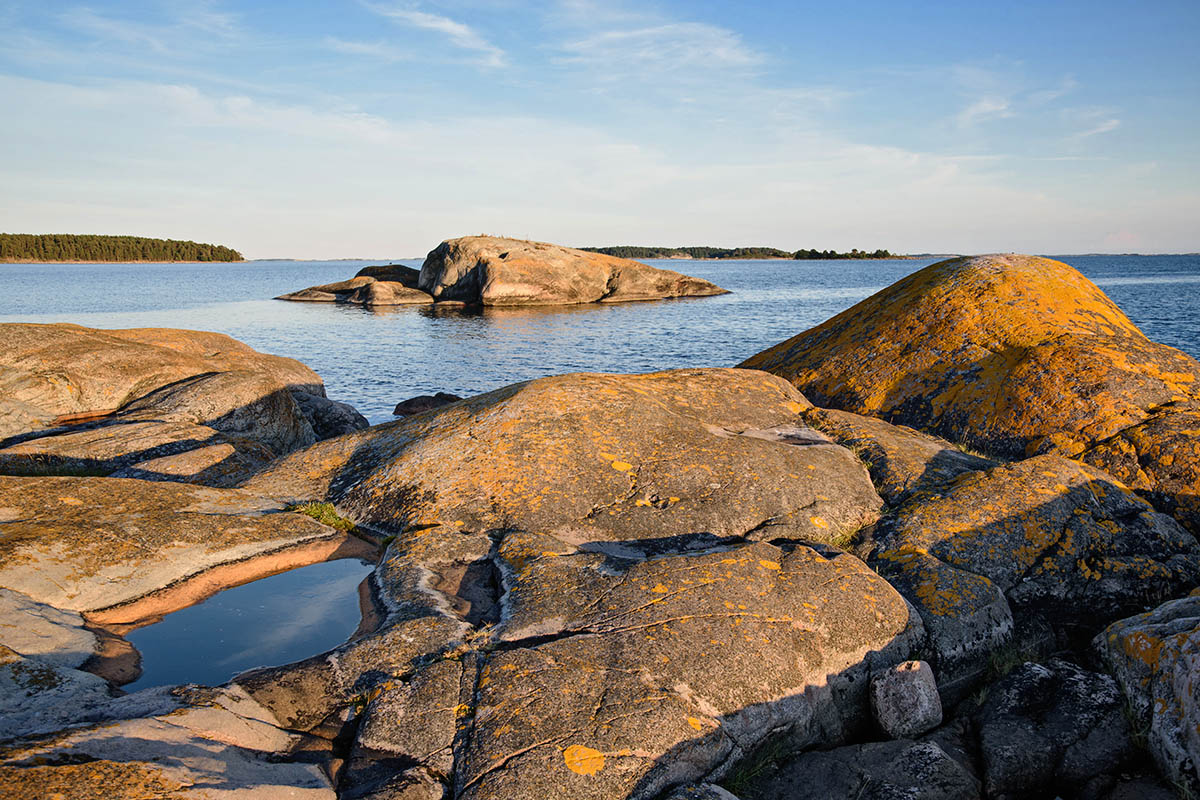
Nagu (Nauvo) Island’s marina has a humorous nickname: the Riviera of the Finnish Archipelago. Of course there are several good restaurants on the cozy beach boulevard and often even a luxury yacht or two on the marina, but everything is on a minuscule scale compared to real Riviera. Instead of gentle palm trees the boulevard is lined by twisted pines.
The most famous restaurant by the marina is L’Escale. Another good place to try out is the hotel-restaurant Köpmans which serves delicious pike burgers.
Nagu is a good place to stay overnight as this is the liveliest island on the route. And if you stay in Hotel Lanterna you will have the chance to experience Finland’s only absinthe bar in the hotel (open by appointment).
Another nice place to stay is the rustic and romantic Guesthouse Martta next to Nagu’s medieval church.
Finby’s Giant’s Corral – the enigmatic stone circle along the Archipelago Trail
A couple of kilometers from the Nagu Marina lies an enigmatic ancient stone circle called Finby’s Giant’s Corral. It’s kind of a stone labyrinth, the origin of which is uncertain. In Finnish folklore they have been made by giants, and the passage through the corral has been seen as a symbolic journey to the legendary land of the giants.
In total, there are almost 150 similar formations in the Finnish archipelago and on the coast. They bear remarkable similarities to the Troy-towns of England.
Finland’s oldest Giant’s Corrals are estimated to be from the Bronze Age, but most were apparently made in the Middle Ages. The most recent are from the 19th century.
Seili – the island of lepers
Another good reason to stay overnight in Nagu is that it allows you to take a half day trip to Seili Island (Själö in Swedish). Boats leave from the Nagu Marina. The history of Seili is like straight out of a horror story.
Seili was turned into a colony of lepers at the end of the 17th century. The sick had no hope of returning from the island: they had to bring with them planks for their own coffins. In 150 years, a total of 663 lepers were sent to Seili, or those who were believed to be. It is said that ill-behaved wives were also convicted to the island if they, unfortunately, suffered from rashes.
Life on the island was rough, and the treatments did not bring any relief, quite the contrary. Common treatment was a metal hat filled with ice cubes.
The last leper died on the island in 1785. But the infamous island was not abandoned: it was turned into a mental hospital. Few recovered and were able to return from the island.
As unbelievable as it sounds, Seili operated as a mental hospital until 1962. The last chapter in Seili’s gloomy history was written in 1985, when a Finnish medical professor suggested that HIV patients could be transferred to the island. It did not happen.
Today, Seili is a popular and rather idyllic little island to visit. Some reminders of the dark past remain, though. The wooden church is from 1733, the time of the leper colony, and one room of a patient has been preserved in its original shape at the former mental hospital. It is said that a nurse committed suicide in the very same room.
Pärnäs harbor and glass igloos
It’s a short ferry ride from Nagu to the next island, Korpo (Korppoo). The ferries leave every 15 minutes or so from Pärnäs (Pärnäinen) harbor. Near the harbor you will find the most unique accommodation in Nagu. Tackork Gård & Marina has glass-roofed igloos that allow you to admire the starry night sky from the comfort of your bed.
From the same port you can also take a ferry to the southernmost inhabited island in Finland. There is no better place than Utö Island to experience the barren romance of the Finnish outer archipelago. There is a hotel on the island where you can stay overnight, or you can just visit the island for a day-trip.
Korpo – Delicious Food and the Archipelago Exhibition
Nagu’s neighboring island Korpo (Korppoo) is a good alternative to stay overnight along the Archipelago Trail. A particularly alluring place to stay is Hotel Nestor, which has been built into an old barn by artist Pia Rousku and designer Frank Hellgren.
The hotel’s restaurant, Back Pocket, is one of the most sophisticated places to dine on the Archipelago Trail. The restaurant is run by the couple’s son, William Hellgren, who used to be working at a Michelin-starred restaurant in Stockholm.
It’s also worth stopping by the Korpo’s Archipelago Center which hosts exhibitions on the life of the archipelago.
From Houtskär to Iniö
Next island on the Archipelago Trail is Houtskär (Houtskari) which is reached by a ferry from Galtby harbor. This is the first slightly longer ferry trip on the route and takes about half an hour.
Houtskär’s attraction is a heartbreakingly beautiful wooden church some 10 kilometers from the ferry quay. The church was built in the early 18th century.
If you are hungry, Grill Cafe Skagen offers tasty Danish-style shrimp sandwiches called skagen at the marina close to the church.
From Houtskar the journey continues to Mossala via two short ferry crossings, and after a longer ferry ride to idyllic Iniö. Many travelers decide to stay overnight in Iniö to soak in the island atmosphere. A nice place to stay is Villa Högbo, which was originally built as Iniö town hall in the 1930s.
Gustavs – delicious farewell to the Archipelago
A longer ferry ride takes from Iniö to Gustavs (Kustavi), which is connected to the mainland by bridges. Here it is finally time to say farewell to the archipelago. Gustavs’ has several nice places to eat and sleep. Kustavin Savipaja is a small handicraft village, which is best known for its Finnish style donuts. A must try!
For lunch a great place is Vuosnaisten Meriasema, which has a delicious buffet full of local island delicacies such as silakkapihvit (herring steaks). You can stay overnight too.
Another popular place to stay overnight is Peterzens Boathouse, which has turned old shipping containers to cozy, thatched-roof huts.
Gustavs to Naantali – last leg of the journey
It’s about a 60 kilometres drive from Gustavs to Naantali (Nådendal in Swedish), that’s less than an hour by car. You have reached your destination. Almost. There are still some places to explore on the way.
Less than twenty kilometers from Gustavs is Taivassalo, where you can stop to admire the grotesque murals of the Church of the Holy Cross. Nearby is a cute little stone bridge, Muntin silta, which looks straight from the home village of the Hobbits. It’s so small that you will drive right past if you don’t mark it in your navigator.
30 kilometers from the church is Mannerheim’s birthplace, Louhisaari Manor. When ordinary Finns were asked to name the Greatest Finn of All Time some years ago, they voted for Carl Gustaf Emil Mannerheim by a huge margin. In his youth, Mannerheim served in St. Petersburg as the Tsar’s bodyguard and went on an adventure as an explorer and spy in Central Asia. After Finland’s independence, Mannerheim led the Finnish army in the Winter War and the Continuation War against the Soviet Union, and at the end of the war also served as the President of Finland.
Naantali – the archipelago ring road ends in an idyllic wooden town
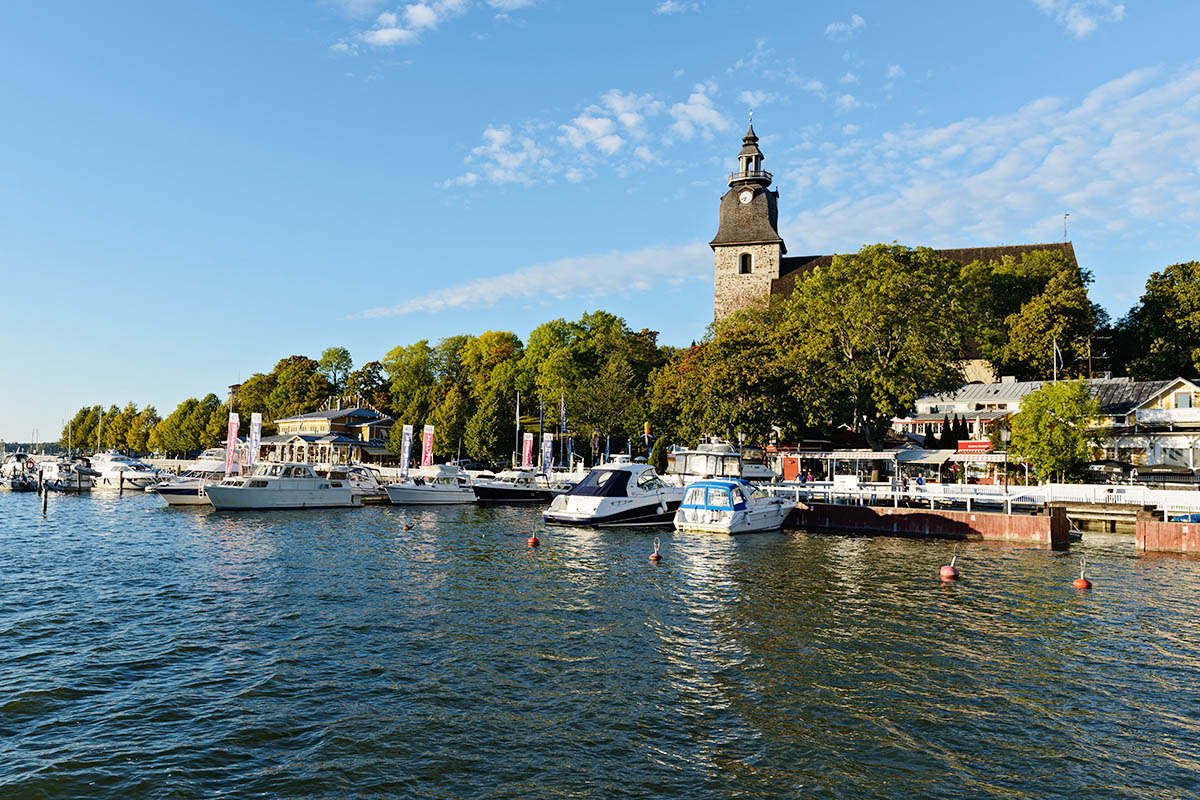
The archipelago ring road ends in Naantali, which many consider to be the best small summer town in Finland. Even the sun is said to shine in Naantali more often than anywhere else in Finland. The President of Finland also spends his summer vacation here in his own summer house called Kultaranta.
Naantali has a picturesque town center made of colorful wooden houses. Even a bigger draw is Muumimaailma (The Moomin World), a theme park dedicated to Finnish fairy tale characters, moomins. The sympathetic moomins were born from the pen of the Finnish author and visual artist Tove Jansson, and they have been made into two super-popular TV animations in Japan. There are no fancy theme park rides in the Moomin World, but the experience comes from meeting the wonderful fantasy characters. The Moomin World is best for toddlers – and Moomin fans of all ages.
The most famous hotel in Naantali is Naantali Spa, which invests especially in the quality of its restaurants. Naantali Spa has the best Thai restaurant in Finland, Thai Garden. The restaurant has also received official recognition for the authenticity of its flavors from the Thai state.
Naantali also has several atmospheric inns in old wooden houses such as the cozy Hotel Palo and Bridget Inn on Kaivokatu street. Both have excellent locations right next to the center.
Continuing the Archipelago Ring Road to Åland
If you haven’t had enough of the archipelago experience yet, you can continue your journey from the Archipelago Ring Road all the way to Åland. From Gustavs Vuosnainen harbor you can catch a connecting ferry to the Åland archipelago.
Another place to catch a ferry to Åland’s capital, Mariehamn (Maarianhamina), is Turku.
Read also: Driving in Finland – Tips and 4 Best Road Trips
The map below shows the best road trips in Finland: Archipelago Trail, Saimaa Circuit, Wild East Tour and Lapland Round Trip.
Did you like this article? If you’re planning a trip to Finland, please book your hotel or rent a cabin or rental car by clicking on our affiliate links. We get a small commission, but you don’t pay any extra. Thanks for your support!











